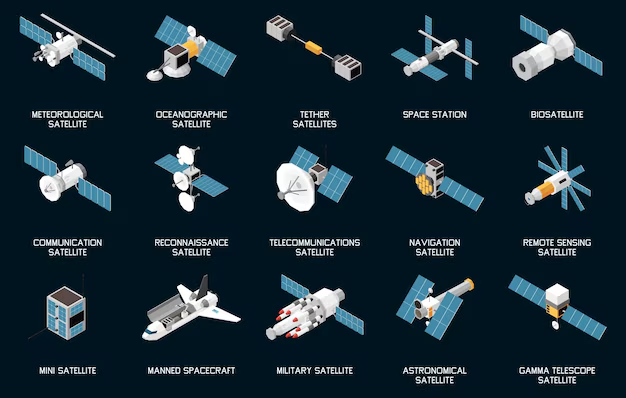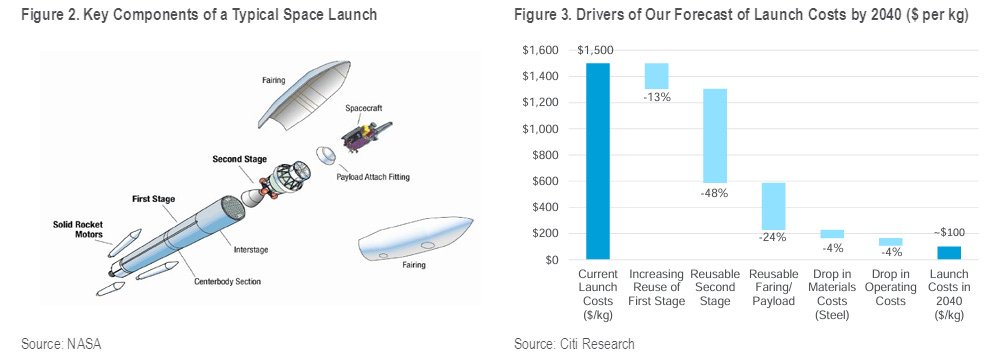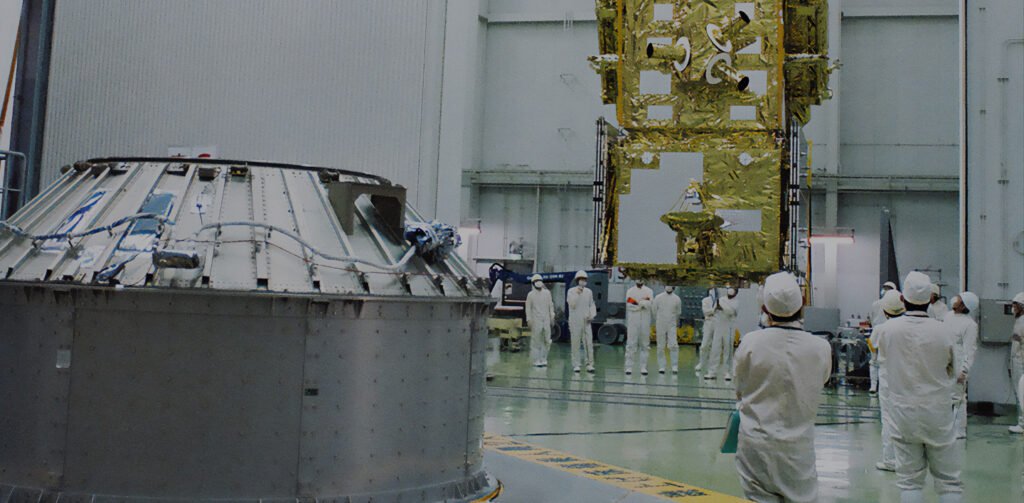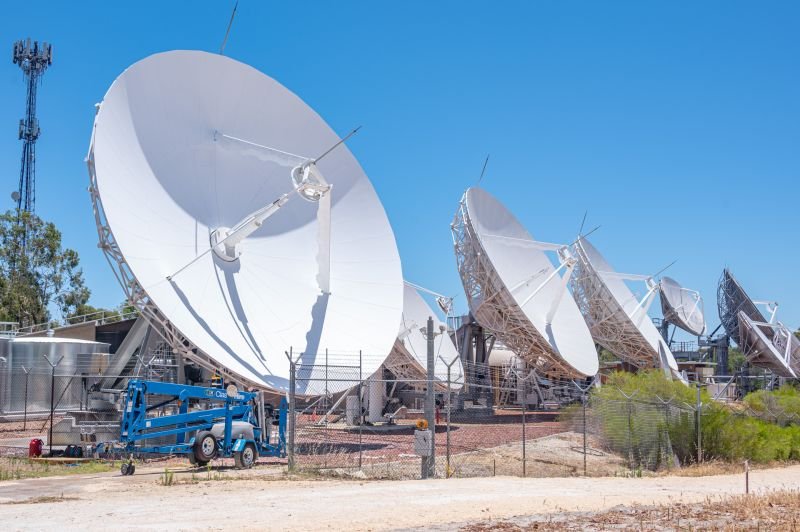On average, a standard satellite costs $100-$300 million to construct and deliver into orbit. However, smaller CubeSats can be as affordable as a few hundred thousand dollars, while large satellites and space telescopes can exceed $1 billion or more in total expenses.
Cost to launch a satellite: A Comprehensive Guide
Launching a satellite into space is a complex and expensive endeavor, involving numerous variables and substantial financial investment. In this article, we will explore the various factors influencing the cost to launch a satellite, breaking down the expenses associated with each stage of the process.
1. Understanding Satellite Launch Costs
The cost of launching a satellite varies significantly based on several factors, including the type of satellite, its size and weight, the intended orbit, and the launch vehicle used. Generally, costs can range from tens of millions to several hundred million dollars.
1.1 Types of Satellites

- Communication Satellites: Used for broadcasting and telecommunications, these satellites are often large and complex, leading to higher launch costs.
- Earth Observation Satellites: These are typically used for environmental monitoring, weather forecasting, and resource management. They vary in size and cost.
- Navigation Satellites: Part of systems like GPS, these satellites are crucial for global positioning and timing services.
- Scientific Satellites: Used for research and exploration, these can vary widely in size and purpose, influencing their launch costs.
- Space station satellites are spacecraft that remain in orbit and host humans for extended periods, serving as artificial habitats for scientific research, technology development, and international cooperation.
- Tether satellite is a space vehicle connected to another by a long cable, serving various purposes such as electrodynamic thrust, momentum exchange, and formation flying in space missions.
- Oceanographic satellites have ushered in a new era of marine discovery. By utilizing remotely sensed data and modeling techniques, these satellites enable global mapping of seasonal changes in ocean surface topography, currents, waves, winds, phytoplankton content, sea-ice extent, rainfall, sunlight reaching the sea, and sea surface temperature.
- Meteorological satellite is a space-based observatory designed to monitor and collect data on Earth’s weather, climate, and atmospheric conditions.
1.2 Factors Affecting Launch Costs
Several key factors influence the overall cost of launching a satellite:

- Satellite Weight: Heavier satellites require more powerful and expensive rockets.
- Orbit Type: The desired orbit (Low Earth Orbit, Geostationary Orbit, etc.) affects the choice of launch vehicle and fuel requirements.
- Launch Vehicle: The cost of the rocket itself, which can range from relatively affordable options like SpaceX’s Falcon 9 to more expensive alternatives like ULA’s Delta IV Heavy.
- Mission Complexity: Missions with complex requirements, such as multiple payloads or precise orbit insertions, can increase costs.
2. Breakdown of Satellite Launch Costs
To understand the true cost of launching a satellite, we need to break down the expenses involved in each phase of the mission.
2.1 Research and Development

Before a satellite can be launched, extensive research and development (R&D) are required. This includes designing the satellite, developing the necessary technology, and testing components. R&D costs can range from millions to hundreds of millions of dollars, depending on the project’s complexity. Research and development (R&D) play a crucial role in satellite development. Here’s a concise overview:
- Design and Conceptualization: Before a satellite takes flight, engineers and scientists work on its design. They consider factors like mission objectives, payload requirements, and orbital parameters. This phase involves conceptualizing the satellite’s purpose and functionality.
- Technology Development: Developing the necessary technology is a significant part of R&D. This includes creating subsystems like communication systems, power sources (such as solar panels), and onboard computers. Engineers also explore innovative materials and manufacturing techniques.
- Testing and Validation: Rigorous testing ensures that the satellite can withstand the harsh conditions of space. Components undergo thermal, vibration, and radiation tests. Simulations help verify the satellite’s performance in orbit.
- Cost and Complexity: As you mentioned, R&D costs vary widely. Simple CubeSats may have lower expenses, while large scientific satellites or geostationary communication satellites can be more expensive due to their complexity.
- Collaboration: R&D often involves collaboration between government agencies, private companies, and research institutions. They pool expertise and resources to advance satellite technology.
Remember, satellites are essential for various purposes, from Earth observation and weather forecasting to telecommunications and scientific research. Their successful deployment relies on thorough R&D efforts!
2.2 Manufacturing
The manufacturing process involves building the satellite’s components, assembling the satellite, and conducting rigorous testing to ensure it can withstand the harsh conditions of space. Manufacturing costs vary based on the satellite’s size and sophistication but typically account for a significant portion of the total budget. Let’s delve into the satellite manufacturing process:
- Component Fabrication: Engineers create individual components, such as solar panels, antennas, and sensors. These are meticulously crafted to meet specific requirements.
- Assembly: The components are assembled into the satellite’s structure. Precision matters here, as any misalignment could affect performance.
- Integration and Testing: The satellite undergoes thorough testing. This includes thermal vacuum tests (to simulate space conditions), vibration tests, and functional checks.
- Environmental Testing: Satellites face extreme temperatures, radiation, and vacuum in space. Ensuring their resilience involves subjecting them to harsh conditions during testing.
- Cost Considerations: Manufacturing costs vary based on complexity. High-tech scientific satellites cost more than smaller communication satellites.
2.3 Launch Services
Launch services include the cost of the rocket, launch pad facilities, and the personnel required to conduct the launch. This is one of the most significant expenses, with prices for commercial launches ranging from $50 million to over $150 million. Launch services encompass the entire process of getting a satellite into space. Here’s a concise breakdown:
- Rocket and Facilities: The cost includes the rocket itself (often a reusable one) and the launch pad facilities. Rockets are carefully designed to carry payloads into specific orbits.
- Personnel and Operations: Skilled personnel manage the launch, ensuring safety and precision. This includes mission control, ground support, and logistics.
- Commercial Launch Costs: Commercial launches can range from $50 million to over $150 million, depending on payload size, destination, and rocket type.
Launch services are a critical—and costly—step in satellite deployment.
2.4 Insurance
Satellite launches carry substantial risk, and insurance is a crucial component of the budget. Insurance costs typically range from 5% to 20% of the satellite’s value, covering potential launch failures and in-orbit malfunctions.
2.5 Ground Operations and Maintenance

Once the satellite is in orbit, ground operations and maintenance become ongoing expenses. This includes operating ground stations, data processing, and routine maintenance to ensure the satellite remains functional throughout its lifespan. Once a satellite is in orbit, ground operations and maintenance are crucial for its continued functionality. Here’s a brief explanation:
- Ground Stations: These are strategically located facilities that communicate with the satellite. They track its position, receive data, and send commands. Ground stations ensure seamless communication between Earth and the satellite.
- Data Processing: Received data undergoes processing to extract valuable information. Scientists analyze images, sensor readings, and other data collected by the satellite. This helps monitor Earth’s surface, weather patterns, and more.
- Routine Maintenance: Satellites require periodic health checks and adjustments. Engineers monitor their systems, update software, and troubleshoot any anomalies. Regular maintenance extends the satellite’s operational life.
Ground operations and maintenance are ongoing expenses that keep satellites functioning effectively in space.
3. Cost-Saving Strategies in Satellite Launches
With the high costs associated with launching satellites, organizations are continually seeking ways to reduce expenses. Here are some strategies to consider:
3.1 Reusable Rockets
Companies like SpaceX are pioneering the use of reusable rockets, significantly reducing the cost of launch services. By reusing components like the rocket’s first stage, launch costs can be decreased by up to 30%. SpaceX’s innovative approach to reusable rockets has indeed transformed the space industry. Here’s a brief explanation:
- Reusable Rockets: Traditional rockets are expendable—they’re used once and discarded. SpaceX’s Falcon 9, on the other hand, features a reusable first stage. After launching a payload, the first stage returns to Earth, lands vertically, and can be refurbished for future missions.
- Cost Savings: By reusing major components like the first stage, SpaceX reduces manufacturing costs. This cost-saving strategy can decrease launch expenses by up to 30% compared to traditional expendable rockets.
- Advancements in Space Access: Reusability opens up new possibilities for frequent launches, satellite deployment, and even crewed missions. It’s a game-changer for the commercial space industry.
3.2 Ridesharing and Piggyback Launches
Ridesharing allows multiple satellites to share a single launch vehicle, distributing the costs among several customers. This approach is particularly beneficial for smaller satellites and can lead to substantial savings. Ridesharing in the context of space launches is an efficient strategy that benefits both satellite operators and launch providers. Here’s a brief explanation:
- Shared Launch Vehicles: Instead of dedicating an entire rocket to a single satellite, ridesharing allows multiple payloads (from different customers) to share a single launch vehicle. These payloads are typically smaller satellites or CubeSats.
- Cost Distribution: By splitting the launch costs among several customers, ridesharing significantly reduces expenses for each participant. It’s particularly advantageous for universities, research institutions, and startups with limited budgets.
- Flexibility: Rideshare missions can accommodate various payloads with different orbital requirements. The primary payload (usually a larger satellite) shares the ride with secondary payloads, optimizing space utilization.
- Challenges: While ridesharing offers cost savings, it requires careful coordination to ensure compatibility among payloads and precise deployment into their intended orbits.
3.3 Advances in Satellite Technology
Technological advancements are enabling the production of smaller, lighter, and more efficient satellites. These innovations reduce both manufacturing and launch costs, making space more accessible to a broader range of organizations.

3.4 Government and International Collaboration
Collaborating with government agencies and international partners can provide access to funding, shared resources, and reduced costs. Programs like NASA’s Commercial Crew and Cargo Program and the European Space Agency’s (ESA) collaborations exemplify how partnerships can mitigate financial burdens. Collaborating with government agencies and international partners is a strategic approach to space exploration. Here’s a brief explanation:
- Funding Opportunities: Government agencies like NASA often allocate significant budgets for space research. Collaborating with them allows access to funding for satellite projects.
- Shared Resources: Partnerships enable the sharing of resources such as ground stations, data centers, and expertise. This reduces individual project costs.
- Risk Mitigation: Joint efforts spread risk. If one partner faces challenges, others can step in to ensure project continuity.
- Examples: NASA’s Commercial Crew and Cargo Program facilitates private companies’ involvement in crewed space missions. ESA collaborates with various European nations for satellite development and launches.
4. Future Trends in Satellite Launch Costs
As the space industry evolves, several trends are expected to influence the cost of launching satellites:
4.1 Increased Competition
The growing number of private companies entering the space industry is driving competition and innovation. This increased competition is likely to lead to more cost-effective solutions and lower prices for satellite launches.
4.2 Technological Innovations
Advances in rocket technology, such as the development of more efficient propulsion systems and lighter materials, are expected to reduce launch costs further. Additionally, improvements in satellite miniaturization and automation will contribute to overall cost savings.
4.3 Regulatory Changes
Changes in regulatory frameworks and international policies could impact launch costs. Streamlined regulations and increased support for commercial space ventures may reduce bureaucratic hurdles and associated expenses.
4.4 Expansion of Spaceports
The development of new spaceports around the world will provide more launch options, potentially lowering costs through increased availability and competition among launch service providers.
The cost to launch a satellite is influenced by numerous factors, from the type of satellite and its intended orbit to the choice of launch vehicle and the complexity of the mission. While launching a satellite remains an expensive undertaking, advancements in technology, increased competition, and innovative cost-saving strategies are driving down prices and making space more accessible.
For organizations planning to launch satellites, understanding these costs and exploring available strategies to reduce expenses is crucial for success in the ever-evolving space industry.

